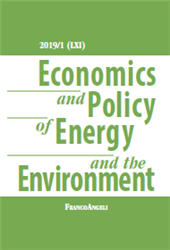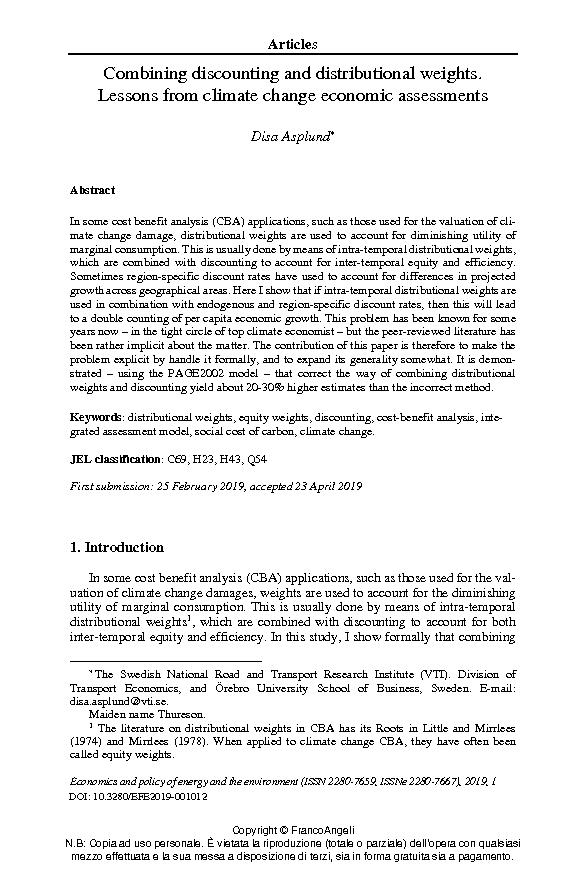Combining discounting and distributional weights : lessons from climate change economic assessments
181-201 p.
In some cost benefit analysis (CBA) applications, such as those used for the valuation of climate change damage, distributional weights are used to account for diminishing utility of marginal consumption. This is usually done by means of intra-temporal distributional weights, which are combined with discounting to account for inter-temporal equity and efficiency. Sometimes region-specific discount rates have used to account for differences in projected growth across geographical areas. Here I show that if intra-temporal distributional weights are used in combination with endogenous and region-specific discount rates, then this will lead to a double counting of per capita economic growth. This problem has been known for some years now - in the tight circle of top climate economist - but the peer-reviewed literature has been rather implicit about the matter.
The contribution of this paper is therefore to make the problem explicit by handle it formally, and to expand its generality somewhat. It is demonstrated - using the PAGE2002 model - that correct the way of combining distributional weights and discounting yield about 20-30% higher estimates than the incorrect method. [Publisher's text].
Fait partie de
Economics and Policy of Energy and Environment : 1, 2019-
Articles du même numéro (disponibles individuellement)
-
Informations
Code DOI : 10.3280/EFE2019-001012
ISSN: 2280-7667
KEYWORDS
- Distributional weights, equity weights, discounting, cost-benefit analysis, integrated assessment model, social cost of carbon, climate change



